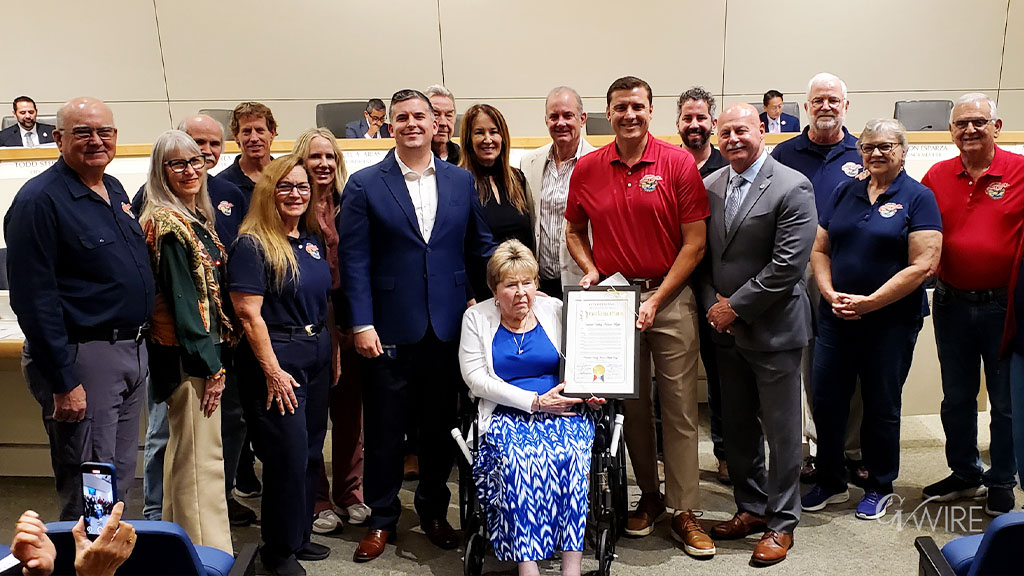Share
The Fresno Chaffee Zoo and California Poison Control System want Fresno residents to be aware that rattlesnakes are waking up from hibernation, leaving their sleepy hideaways and slithering out into the great outdoors where the rest of us are.
Officials from the Fresno County Department of Public Health joined animal and emergency medicine experts at the zoo on Tuesday to host Rattlesnake Awareness Day.
“There are eight species of rattlesnakes in the United States,” said Mark Halverson, curator of the Reptile Department at the Fresno Chaffee Zoo. “But only the Northern Pacific are found in the Central Valley and in Northern California.”

Rattlesnake Bites Rarely Fatal
According to the California Department of Fish and Wildlife, rattlesnakes can turn up around homes and yards, bushy areas, and under woodpiles.
However, there are several precautions one can take to lessen the chances of being bitten.

Dr. Rais Vohra, interim health officer for FCDPH and medical director for the California Poison Control System, says rattlesnake bites may be venomous but they are rarely fatal.
“With snakes bites, you don’t have to worry about death, but instead disfigurement,” said Vohra.
The longer someone waits to get medical attention after a rattlesnake bite, the more likely it is that the snake venom will digest the tissue and cause severe disfigurement in someone’s limbs.
According to health officials, a total of 350 rattlesnake bite incidents are called into poison control each year in California.
How to Treat a Snake Bite Wound
Perhaps the first thing people should know is to never treat a rattlesnake bite with techniques seen in Hollywood westerns.
After a person is bitten by a rattlesnake, Vohra says the victim must get to a medical treatment facility quickly because it can take up to an hour for doctors to prepare the anti-venom.
“Anti-venom is the key,” said Vohra.
Fashioning a quickly made tourniquet is a common practice, but also can lead to a double injury, said Vohra.
“Call 911 as soon as you get bitten and do not use a tourniquet,” said Vohra. “Using a tourniquet is an urban folk myth often seen in movies, but it is never a good idea because it can cut blood flow.”
Instead, health officials recommend carrying medical wrappings when on hikes. People living in rattlesnake areas should have the wrappings in their homes.

In the event of a rattlesnake bite, find a stick or twig and place it straight and firmly on your leg or arm and tenderly wrap it around the limb until you get to a hospital.
Fish and Wildlife also recommends that victims not drink alcohol, apply ice on the wound, or cut it off with a knife or razor. And, don’t try to suck the venom out with your mouth.
Rattlesnake Safety Tips
Rattlesnakes don’t always reside in the lower mountains and deserts. Sometimes they live in shady areas around homes and yards, including urban areas. They’re also found at riverbanks, lakeside parks, and golf courses.

Rattlesnake safety tips from the state Department of Fish and Wildlife:
- Be alert. Rattlesnakes are more active at dawn, dusk, and during the night.
- Wear sturdy boots and loose-fitting long pants. Never go barefoot or wear sandals when walking through brushy, wild areas.
- When hiking, stick to well-used trails. Avoid tall grass, weeds, and heavy underbrush where snakes may hide during the day.
- Do not step or put your hands where you cannot see.
- Step ON logs and rocks, never over them, and be especially careful when climbing rocks or gathering firewood. Check out stumps or logs before sitting down, and shake out sleeping bags before use.
- Never grab “sticks” or “branches” while swimming in lakes and rivers — rattlesnakes can swim.
- Be careful when stepping over doorsteps. Snakes like to crawl along the edge of buildings where they are protected on one side.
- Never hike alone. Always have someone with you who can assist in an emergency.
- Do not handle a freshly killed snake — it can still inject venom.
- Teach children early to respect snakes and to leave them alone.
- Leash your dog when hiking in snake country. Dogs are at increased risk of being bitten due to holding their nose to the ground while investigating the outdoors. Speak to your veterinarian about canine rattlesnake vaccines and what to do if your pet is bitten.
For immediate help, call California Poison Control at 1-800-222-1222 or 911.
RELATED TOPICS:
Categories

Obesity Drugs May Drop to as Little as $150 a Month



















